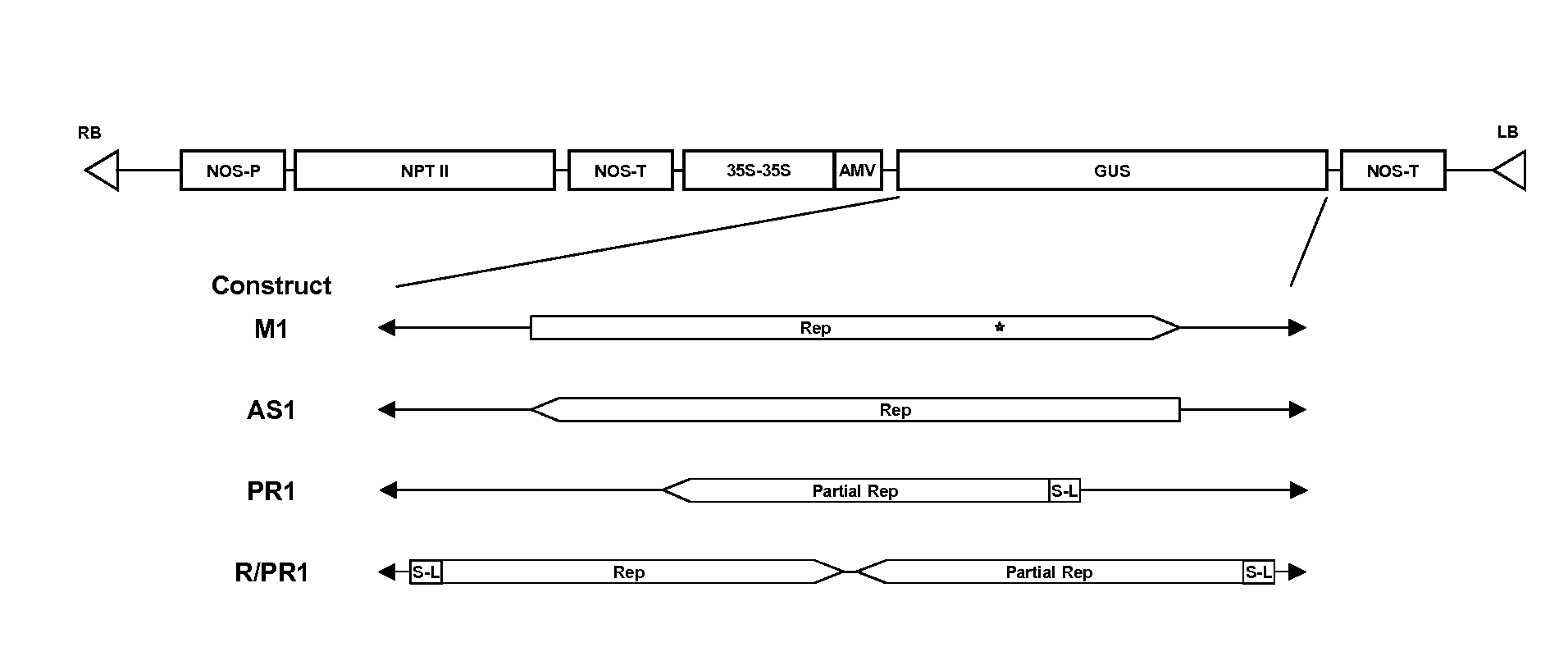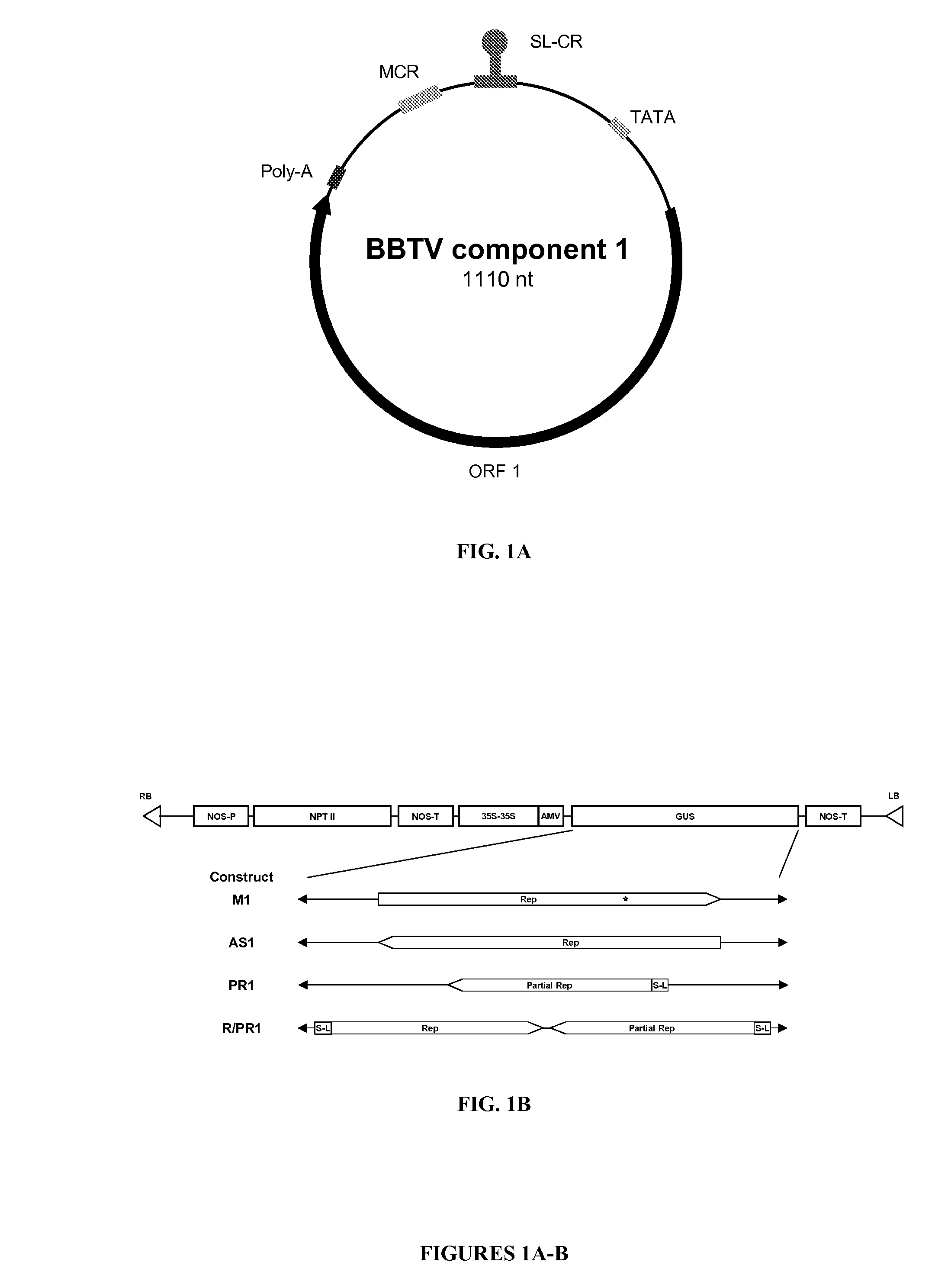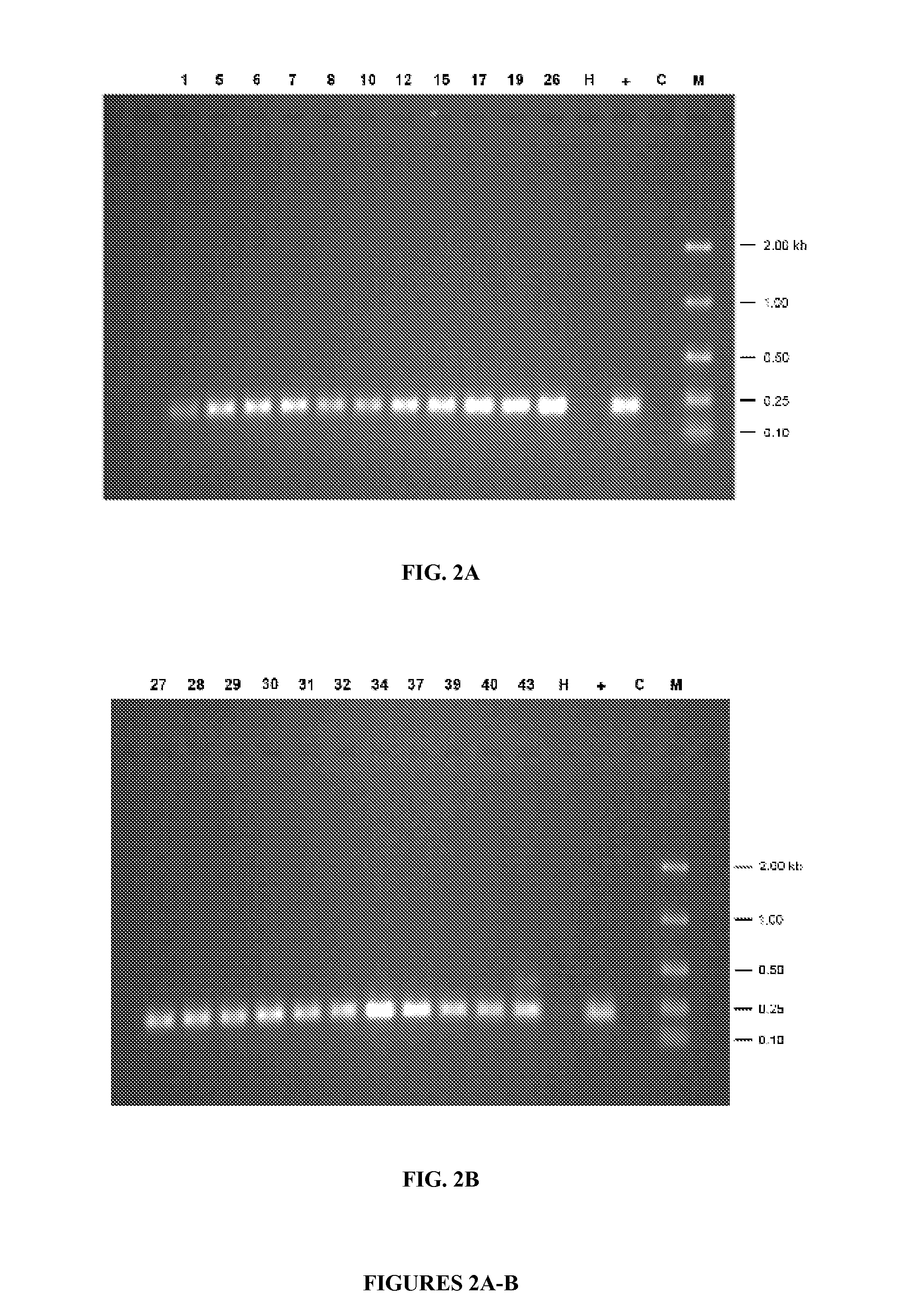Plant resistance to banana bunchy top virus
a plant and banana technology, applied in the field of plant resistance to banana bunchy top virus, can solve the problems of total yield loss and abandonment of fields, inability to produce crops, and infected plants become chlorotic and stunted, so as to increase the resistance to bbtv, impart bbtv resistance to plants, and increase the effect of resistan
- Summary
- Abstract
- Description
- Claims
- Application Information
AI Technical Summary
Benefits of technology
Problems solved by technology
Method used
Image
Examples
example 1
Gene Constructs
[0090]Four constructs were created from the BBTV replication associated protein (Rep) gene (FIG. 1B and FIG. 4). All constructs (M1, AS1, PR1, and R / PR1) were created in the transformation vector pBI121 by replacing the GUS gene in the native vector with one of the Rep constructs (FIG. 6).
[0091]Construct M1: Replication-associated protein (Rep) gene ORF from component 1 of the Hawaiian BBTV isolate, including the entire coding region of the replication-associated protein (Rep) gene containing two single-point mutations and the polyA-tail motif. Also included were 52 by of the 5′-UTR including the putative TATA box, and 36 by of the 3′-UTR both from component 1 of the Hawaiian BBTV isolate. All constructs were in sense orientation relative to the promoter, enhancer, and terminator in the vector.
[0092]Construct AS 1: Replication-associated protein (Rep) gene ORF from component 1 of the Hawaiian BBTV isolate, including the entire coding region of the replication-associat...
example 2
Transformation and Regeneration of Transgenic Banana Lines
[0095]Embryogenic cell suspensions (“ECS”) initiated from immature male flowers of ‘Dwarf Brazilian’ banana were established and transformed using Agrobacterium tumefaciens containing one of four constructs derived from the Rep gene of BBTV in binary vector pBI121 (FIGS. 1A-B). Transformed cell lines were selected on kanamycin, induced to form shoots and roots, and established in soil-less potting mix in the greenhouse.
example 3
[0096]DNA was isolated from lamina of the first fully expanded leaves of banana plants using the Plant DNeasy® Mini kit (Qiagen, Inc.) with modifications. All DNAs were quantified on a Nanoprop® spectrophometer and adjusted to 10 ng / μl with water. Primers designed to amplify a 209 by fragment of the BBTV Rep gene were synthesized and used in polymerase chain reaction assays to detect the Rep gene in transgenic plants. The sequence of the forward primer: 5′-CCATCAACAATCCCACA-3′ (SEQ ID NO:19) and the reverse primer: 5′-ACAGTATGACCGCGCTTCTT-3′ (SEQ ID NO:20). All reaction volumes were 50 μA and contained: 1× TaqGold® reaction buffer, 1.5 mM MgCl2, 200 μM each dNTP, 400 μM each primer, and 0.2 units TaqGold® polymerase. Cycling conditions were 95° C. for 10 minutes; followed by 35 cycles of 95° C. for 30 seconds, 50° C. for 30 seconds, 72° C. for 60 seconds; followed by 10 minutes at 72° C. 10 μL of each reaction was resolved on a 1.5% agarose gel in lx TAE buf...
PUM
| Property | Measurement | Unit |
|---|---|---|
| diameter | aaaaa | aaaaa |
| nucleic acid | aaaaa | aaaaa |
| resistance | aaaaa | aaaaa |
Abstract
Description
Claims
Application Information
 Login to View More
Login to View More - R&D
- Intellectual Property
- Life Sciences
- Materials
- Tech Scout
- Unparalleled Data Quality
- Higher Quality Content
- 60% Fewer Hallucinations
Browse by: Latest US Patents, China's latest patents, Technical Efficacy Thesaurus, Application Domain, Technology Topic, Popular Technical Reports.
© 2025 PatSnap. All rights reserved.Legal|Privacy policy|Modern Slavery Act Transparency Statement|Sitemap|About US| Contact US: help@patsnap.com



